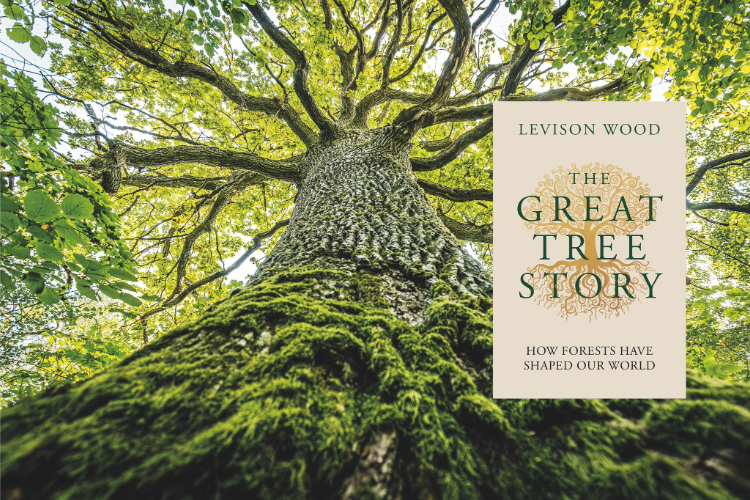
In his latest book, Levison Wood describes the vital role that forests have played in our past – and their importance for our future
Forests are integral components of the global ecosystem. They serve as a complex habitat for biodiversity, forming a delicate web of interdependence that we are only now beginning to understand. In his book, explorer, filmmaker and author Levison Wood delves into the profound and complex influence that forests have had on our civilisation. From the evolutionary history of trees and their cultural significance in ancient society to the impacts of agriculture, colonisation and the Industrial Revolution on forest ecosystems, the author sets out to examine our relationship with the natural world of woodlands.
Enjoying this article? Check out our related reads:
‘The sad reality is that for many people these days,’ he says, ‘trees are simply resources, things that hold only monetary value as a potential desk, building material or a piece of charcoal to burn.’ Wood travelled to the Amazon, where he lived with the indigenous Asháninka tribe and came into contact with Benki Piyᾶko, a shaman who inspired his people to unite against the corporate deforestation of their land. Piyᾶko explained his work to preserve the forests as a fraternal bond between his people and the trees, a relationship that is highlighted throughout the book.
We learn that in many indigenous cultures, forests were seen as sacred spaces, imbued with spiritual significance and home to a diversity of life that was respected and revered. Plants have also provided a source of natural stimulation in the Western world for millennia. Around five thousand years ago, in the foothills of the eastern Himalaya, inquisitive humans found that brewing the leaves of low-growing evergreen trees could yield a palatable and invigorating drink. This was a significant discovery for humanity, resulting in tea becoming the second-most-consumed liquid in the world after water. Trees also play an important role in protecting urban life. An example is the Metropolitan Forest initiative undertaken in Madrid, where a 75-kilometre-long ring of 1.5 million saplings is being planted around the city’s perimeter to improve the city’s air quality.
The author makes the case for the existence of a close bond between humans and trees, which is, in fact, inherent in our genetic code. The evolutionary split between the two marked humanity’s departure from a common ancestry with trees. Yet we still share forty-five per cent of our genetic material with trees at the molecular level.

More than fifty million years ago, almost the entire surface of the Earth was covered in forests. Our tree-dwelling mammalian ancestors developed prehensile hands and opposable thumbs, which allowed them to grasp branches and navigate the complex canopy of forestland. The author points out that on the basis of forest predominance, there is no doubt that our evolutionary roots are arboreal. Moreover, we decided to abandon the canopy only some five million years ago and since that time, humanity has been steadily distancing itself from its tree-dwelling roots.
We often exhibit a dismissive and, at times, even contemptuous attitude toward our woodland ancestors. Consider, for instance, the recent felling of a centuries-old oak next to a restaurant in north London. The tree was summarily chopped down, according to the eatery’s owners, on the advice that it was dying and posed a risk to the public. It later emerged that the tree was in perfect health and could have lived on for another several hundred years. Even more contemptible are deliberate acts of destruction, such as the destruction of the Sycamore Gap broadleaf, a historic monument that stood next to Hadrian’s Wall in Northumberland, which was chopped down by vandals in 2024.
Those who see nothing in a tree but a pillar of wood crowned with leaves might do well to reflect on the words of the German poet Hermann Hesse: ‘Whoever could know how to listen to trees could discover the truth of the world.’




